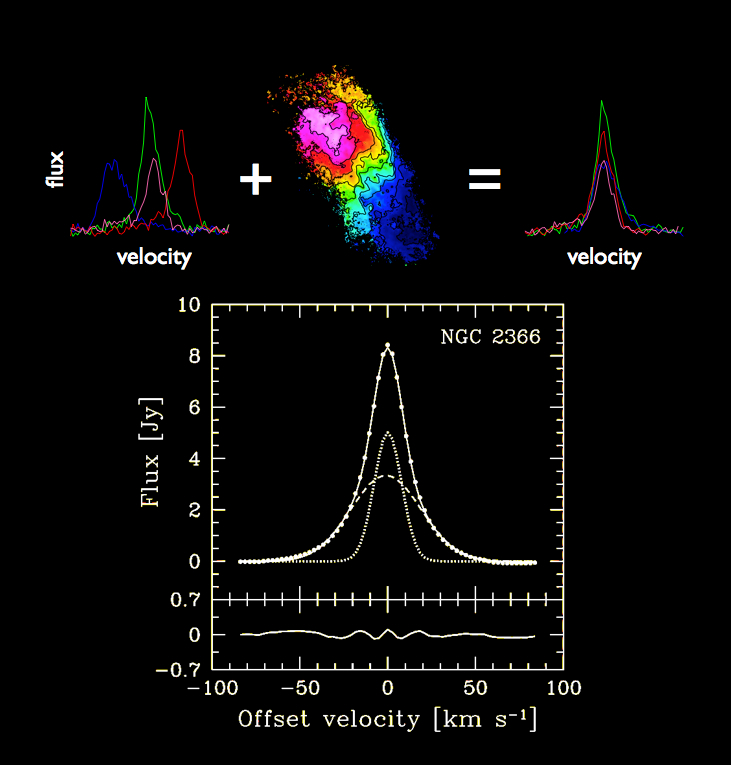Daily Image
30-07-2012THINGS Super Profiles
| Submitter: | Erwin de Blok |
| Description: | An HI profile shows the intensity of HI emission as a function of Doppler velocity at a particular spatial position in a galaxy. The shapes of HI profiles in galaxies can potentially give us much information on parameters like the temperature of the interstellar medium, the amount of turbulence, and the balance between heating and cooling processes. In many cases the presence of noise in the observations limits our ability to constrain many of these numbers. In a recent paper http://arxiv.org/abs/1207.5041 ), PhD student Roger Ianjamasimanana from the University of Cape Town, in collaboration with Erwin de Blok and George Heald from ASTRON, and Fabian Walter from the MPIA in Heidelberg, Germany, used a method commonly used for high-redshift observations to improve the signal-to-noise of HI profiles in nearby galaxies. HI profiles usually each have a different typical velocity, due to the rotation of their host galaxy. Profiles can therefore not be simply summed, as this would average out the signal (see top-left of plot). But by using the velocity field (top-middle of plot) we can correct for the rotation and line up the profiles at their typical velocities (top-right). The profiles can be then summed into a so-called "super profile" (bottom panel). This was done for all galaxies in the THINGS sample (www.mpia.de/THINGS), one example is shown here. The profiles are clearly non-gaussian, and need two components to be well-described. These narrow and broad components are identified with the cold and warm neutral medium in these galaxies. Work that is now in progress is starting to identify the properties of the cold and warm components, and investigates possible correlations of the cold component with star forming regions in these galaxies, as stars are known to form in environments where the gas has cooled. Eventually it may be possible to use the easily observable cold neutral component as a tracer for future star formation, rather than the more difficult to observe molecular gas. |
| Copyright: | WJG de Blok |
| Tweet |  |
